One of Azure API Management great features is the ability to secure your APIs through policies, and thereby separating authorisation logic from your actual APIs. There’s plenty of guidance available on how to integrate Azure API management with Azure Active Directory or other OAuth providers, but very little information on how to apply fine grained access control on your APIs. Yes, it’s easy to setup OAuth to grant access to API consumers (authorisation grant) or machine to machine communication (client credentials grant). With the ‘validate JWT token’ policy we can validate the authenticity of your access token, and perform claims based authorisation. However unless we implement further controls anyone from our Azure AD tenant can access your APIs by default. So what can we do to restrict access to certain groups or roles within our application?
Option 1: Graph API
One option would be to interrogate the Graph API within our application and check for AD group membership. However, I prefer to keep this authorisation logic outside my actual API and repeating this task for every API becomes cumbersome. Besides, keeping strangers out at the front door would be my preference. Ideally unauthorised users are kept at bay in Azure API management.
Option 2: AAD group claims
Add group claims to our AAD JWT token. This can be easily configured in the App manifest of the API application registration in AD by configuring the groupMembershipClaims property:
Although this results in group claims to be added in OAuth JWT tokens, group claims are provided as GUIDs. Not really user friendly to apply our access controls, having to know each exact GUID corresponding to a group. Besides, we don’t always want to rely on AD wide group definitions to control access within our application.
Option 3: Role Based Access Control with JWT validation
A third and in my opinion neatest option would be to define application specific roles in our API application manifest in AAD. Users can be assigned to these application specific roles, and we can check for role claims in an Azure API management policy. In addition to allowing users to be assigned to roles, we’ll enable application assignment for application to application communication as well (line 10):
For the purpose of this demo I’ve defined two application registrations in the AAD tenant:
- Kloud API M (API)
This represents our backend API, and will contain the application roles and user assignments. For the sake of simplicity in this demo I’ll use a mocked response in Azure API management instead of standing up an API. - API M client (API client application)
This is the application accessing our backend API on behalf of the signed-in API users. This application will need a delegated permission to access the API, as well as delegated permissions to initiate the user sign-in and read a user’s profile:
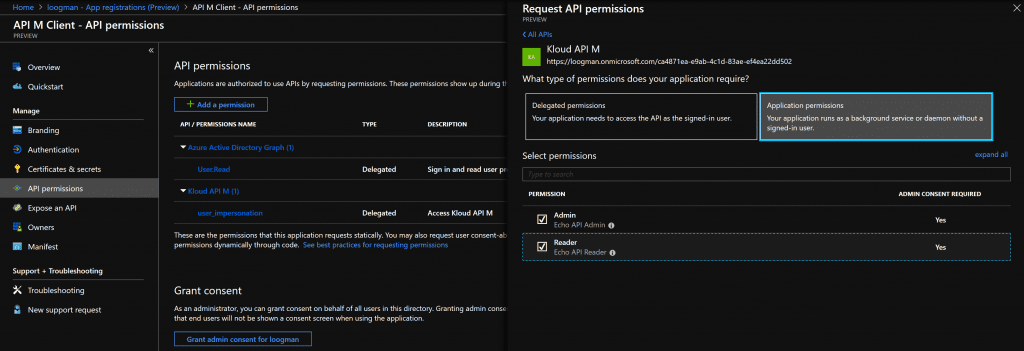
You’ll also notice that the API M client has the custom application permission of ‘Admin’ and ‘Reader’ assigned to it. This allows the application to access our backend API directly using the OAuth client credentials grant.
In addition, we’ll require users to be specifically assigned to access our application through one of these roles by enabling the ‘user assignment required’ option in our AAD Enterprise Application definition:
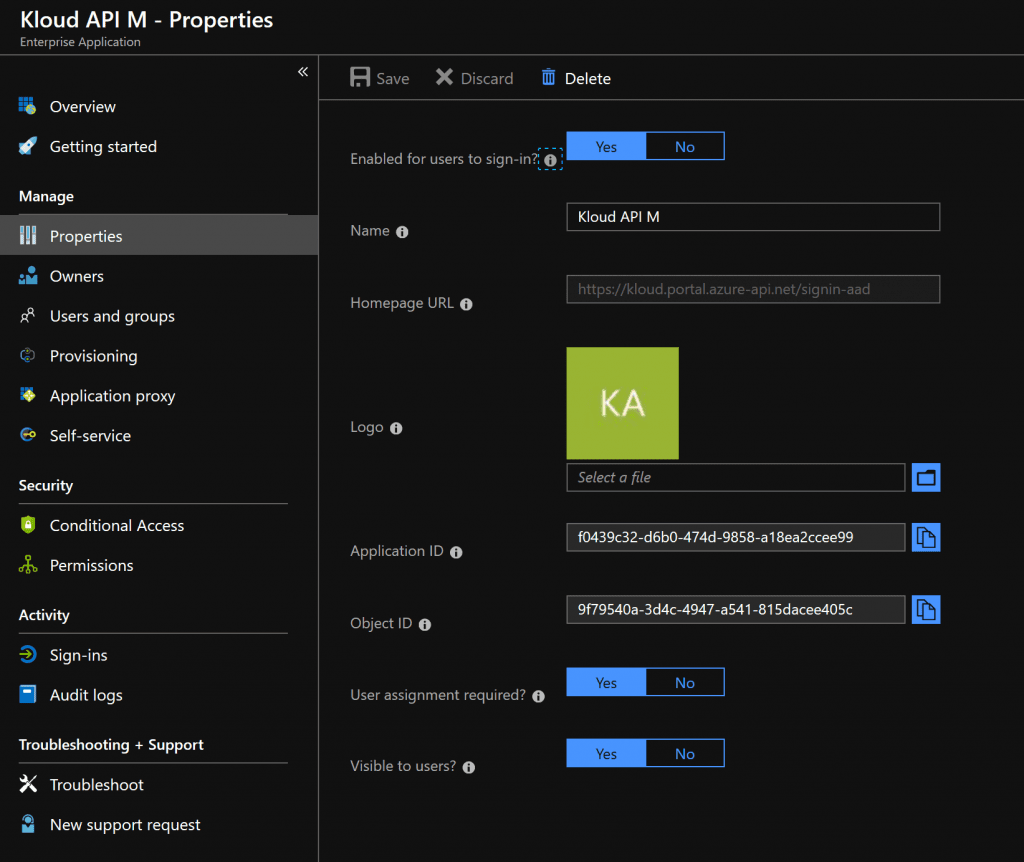
We can assign our application specific roles to a user from our AAD tenant:

Next we’ll look at how to perform authorisation based on role claims in Azure API Management. Let’s first have a look at the JWT policy. You can apply this at the operation, API or global level.
The easiest way to test our setup is by enabling OAuth user authorisation in the developer console, as per instructions here. This allows us to use the API M developer console as our client application, accessing our API on behalf of a signed in user. The demonstration below shows the API returning a ‘200 OK’ when we provide a JWT token containing the Admin role:
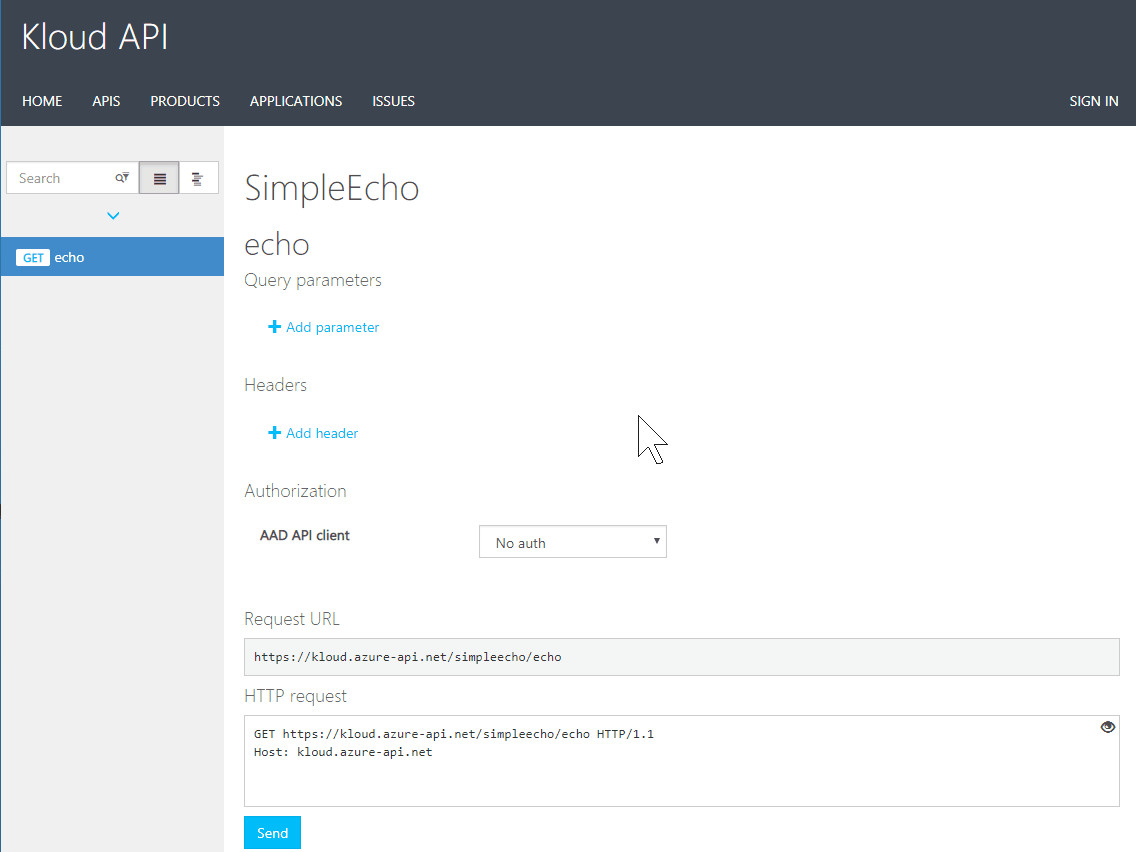
And here’s the JWT that was returned by the authorization server:
The JWT policy specifically checks for an admin role, so lets try calling the API with an account that only has the role of Reader:
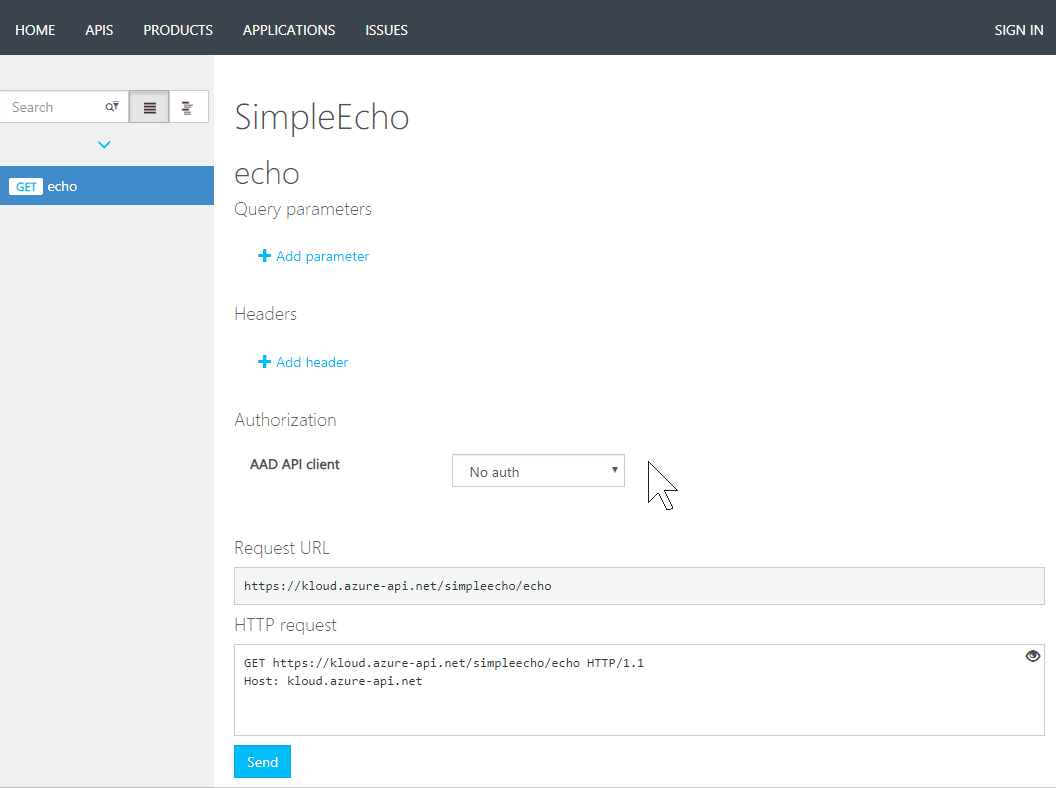
This time the JWT policy returns a ‘401 unauthorised’ due to the absence of the Admin role claim. We’ve successfully demonstrated how we can grant access to a backend API based on role membership in our AAD application.
Lastly, I want to show how we can enable machine to machine communications in a similar way. Let’s have a look again at the permissions assigned to the API M Client application. As you can see below we’ve assigned the application permission ‘Admin’ to the API M Client:

After giving administrator consent and enabling the client credentials grant in Azure API Management we can verify our policy through the developer console:
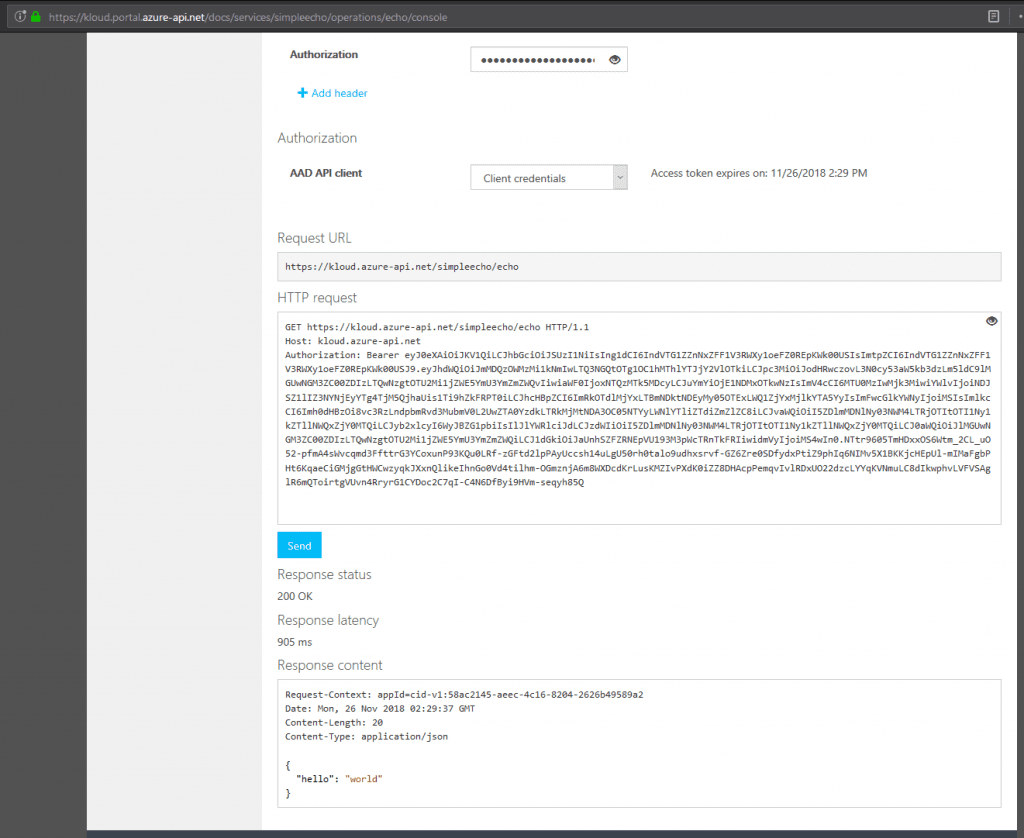
As I demonstrated a combination of Azure Active Directory and Azure API Management offer great capabilities to apply RBAC on APIs, without having to implement any authorization logic in our actual API.
